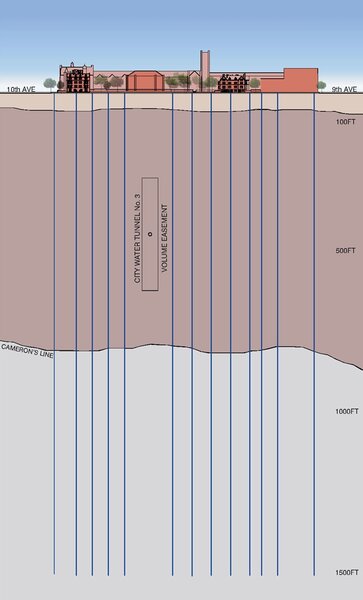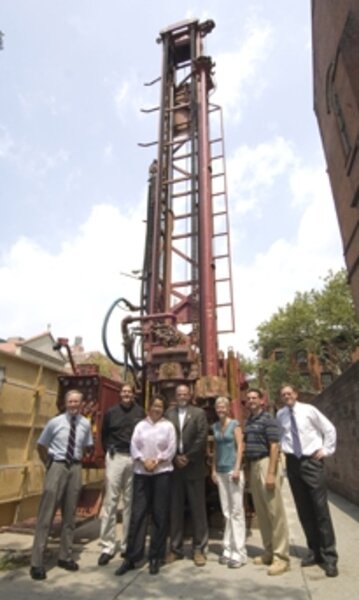Geothermal heating in action
Loading...
At the General Theological Seminary in New York City, thoughts, if not eyes, are meant to be cast heavenward. But the oldest Episcopal seminary in the United States also is looking deep underground for a way to heat and cool its buildings.
Earlier this year seven wells were completed that drilled into schist rock formation hundreds of feet below Manhattan island to tap an underground river that flows at a constant 65-degree temperature year round. By circulating that water to the surface, several of the seminary’s handsome 19th-century buildings are being cooled in summer and heated in winter. When the project is completed, 20 such wells will heat and cool the entire campus.
While large, intensely hot geothermal sites can be used to generate electricity (see main story), even the relatively small differences in water temperature below ground can be used as heating and cooling sources. Such geothermal heat pump projects are springing up nationwide as alternatives to burning oil and gas, from private residences to public buildings such as a fire station in Iowa City, Iowa, and a veteran’s home in Burlington, Vt.
The geothermal heat pumps at the New York seminary were in part an aesthetic decision, eliminating the need to put cooling towers on the historic Victorian roofs or in middle of the peaceful courtyard garden. But being a better steward of the earth by cutting use of fossil fuels was the overriding motivation, says Maureen Burnley, the seminary’s executive vice-president for finance and operations.
“The stewardship issue, I think, is what tipped us over the edge,” she says. “It was an opportunity for us to make a pretty powerful statement ... to take a stand for green technology.”
Obtaining permits from the city to drill the wells, and satisfying neighbors that no harm would be done to them, slowed the project and brought some soul-searching, Ms. Burnley says. “This was new territory for us, and we came very quickly to learn that it was new territory for the city [too]. We were very much a test case.”
The project has cost $9 million so far and is projected to cost nearly $20 million at completion. The break-even period will depend on the future price of the heating oil that the seminary won’t have to burn, probably seven to 14 years. Once all the wells are online, the seminary will save about 1,400 tons of climate-warming carbon emissions each year.
“If you believe in the long term, and we do, this [decision] is a no-brainer. If you don’t believe in the long term, you probably shouldn’t be in our line of work,” Burnley says with a chuckle.
The seminary regularly receives calls from schools and churches asking about the project. “We’ve all got to get going on this stuff,” she says.






